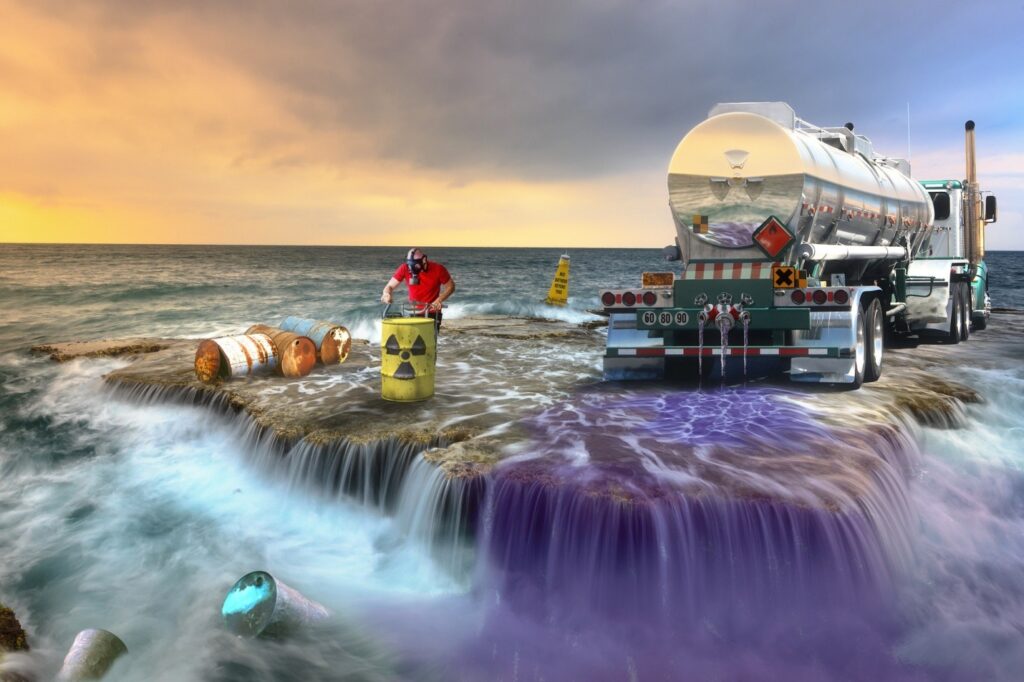The 8-Minute Rule for Reclaim Waste
The 8-Minute Rule for Reclaim Waste
Blog Article
7 Easy Facts About Reclaim Waste Explained
Table of ContentsReclaim Waste Things To Know Before You BuyThe Buzz on Reclaim WasteGetting The Reclaim Waste To WorkNot known Facts About Reclaim WasteTop Guidelines Of Reclaim Waste
Domestic sewer waste refers to the waste and products from a domestic septic container. The appropriate management and disposal of residential sewer waste need fluid waste to be moved to a sewage therapy plant where the appropriate approaches and tools are used to purify and dispose of waste.
Commercial waste frequently consists of prospective risks, such as combustible products or a mix of liquid and solid waste items, and requires a more advanced and detailed disposal procedure. The disposal of business waste commonly involves the filtration of waste prior to transportation to make certain safe and correct disposal. Industrial waste is produced from results and runoff of commercial processes and production.
This type of waste can not make use of the same sewage monitoring transportation or procedures as septic or business liquids. The hazardous waste administration process calls for the assessment and testing of fluid waste before it undergoes the disposal process (liquid waste removal melbourne). Runoff waste is the fluid waste that originates from drainage and excess stormwater in highly booming locations or cities
Runoff waste can trigger contamination and flooding otherwise handled appropriately. Discover more regarding sewage system cleaning and waste monitoring. Guaranteeing correct waste management can prevent calamities and reduce environmental harm. Both people in household settings and professionals in industrial or manufacturing markets can take advantage of recognizing the procedures and regulations of liquid waste management.
Some Known Facts About Reclaim Waste.
Get in touch with PROS Solutions today to find out concerning our waste monitoring and disposal services and the appropriate ways to take care of the fluid waste you produce.
(https://www.gaiaonline.com/profiles/reclaimwaste1/46907679/)Do you recognize what takes place to your water when you disengage, flush the commode or drain the washing device? No? Well, it's worth recognizing. This so-called 'wastewater' is not just an essential source however, after treatment, will be launched to our land, rivers or the ocean. Made use of water from commodes, showers, baths, kitchen sinks, laundries and commercial processes is called wastewater.

water utilized to cool equipment or clean plant and tools). Stormwater, a form of wastewater, is drainage that streams from agricultural and city areas such as roofing systems, parks, gardens, roadways, paths and gutters into stormwater drains pipes, after rain. Stormwater flows without treatment directly to local creeks or rivers, eventually reaching the sea.
Reclaim Waste - The Facts
In Queensland, many wastewater is treated at sewer treatment plants. Wastewater is transferred from domestic or industrial websites through a system of sewage systems and pump stations, referred to as sewage reticulation, to a sewage treatment plant. Neighborhood federal governments develop, maintain and run most sewage treatment plants. Operators go right here are licensed under the Environmental Management Act 1994 to release cured wastewater at an appropriate ecological standard right into waterways.
The Division of Natural Resources advises city governments about managing, operating and maintaining sewerage systems and treatment plants. In unsewered locations, local federal governments might require homeowners to set up specific or house sewer therapy systems to deal with domestic wastewater from bathrooms, kitchen areas, shower rooms and laundries. The Division of Natural Resources authorizes making use of family systems when they are confirmed to be reliable.
In some new neighborhoods, treatment of some stormwater to eliminate litter, sand and crushed rock has started utilizing gross pollutant catches. Wastewater treatment occurs in four phases: Eliminates strong matter.
Wastewater then moves into big containers where solids settle and are removed as sludge. Oil and residue are skimmed from the surface area. Utilizes little living microorganisms called micro-organisms to break down and get rid of staying liquified wastes and fine fragments. Micro-organisms and wastes are incorporated in the sludge. Gets rid of nitrogen and phosphorus nutrients that could trigger algal blooms in our waterways and intimidate aquatic life.
A Biased View of Reclaim Waste
Nutrient removal is not available at all sewage treatment plants due to the fact that it requires pricey specialized tools. Clear fluid effluent created after treatment may still include disease-causing micro-organisms - liquid waste removal.

This normally means wastewater has to be treated or impurities eliminated prior to it can be released to waterways. Most wastewater flows into the sewerage system. Under the Act, regional federal governments carry out authorizations and licences for ecologically appropriate activities (ERAs) entailing wastewater launches that may have a regional impact. The division carries out authorizations and licences to ERAs involving wastewater launches that may have a regional or statewide effect.
Top Guidelines Of Reclaim Waste
Surveillance gives factual details concerning water quality and can validate that permit problems are being fulfilled. The information acquired via tracking provides the basis for making water top quality choices.
Report this page